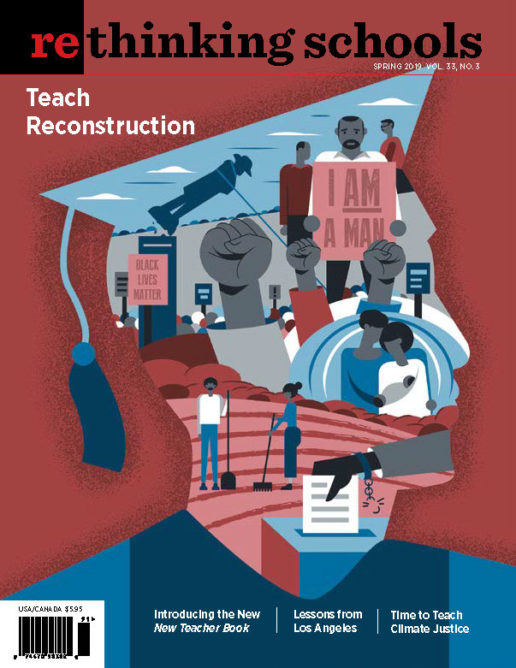Our picks for books, videos, websites, and other social justice resources 33.3
Novel
Jazz Owls: A Novel of the Zoot Suit Riots
By Margarita Engle
Illustrated by Rudy Gutierrez
(Simon & Schuster, 2018)
179 pp.
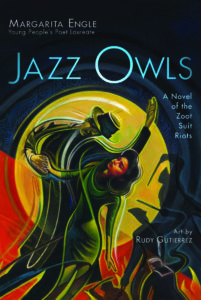
Every 20th-century U.S. history class covers World War II. However, the 1943 attack by white sailors on Mexican Americans, Filipinos, and African Americans in Los Angeles, known as the Zoot Suit Riots, gets little mention. Author Margarita Engle uses free verse to bring this history to life through a wide range of characters. The story centers on a family of cannery workers in Los Angeles. During the Zoot Suit Riots (which Engle refers to as the Sailor Riots) we also hear from reporters, police, and sailors. Although all but one are fictionalized, their stories provide a bottom-up history for middle to high school readers, beginning with the Sleepy Lagoon Murder in 1942 and ending with the 1948 Supreme Court ruling about interracial marriage in Perez v. Sharp.
***
Film
Dawnland
Directed by Adam Mazo and Ben Pender-Cudlip
(UpstanderProject.org, 2018)
86 min./54 min. (broadcast version)
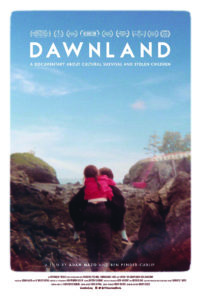
During the 20th century, Indigenous children throughout the United States and Canada were stolen from their homes and communities and placed with white families. It is an ugly history. Dawnland tells the story of the Maine Wabanaki-State Child Welfare Truth and Reconciliation Commission, organized to collect the stories of Indigenous people in Maine who were the victims — and survivors — of this practice of what one commissioner in the film describes as cultural genocide. As one Indigenous woman taken from her family remembers: “My baby sister and I sat in a tub of bleach one time, tried to convince each other that we’re getting white. And then we knew they would accept us. The [white] boys in our school, they said we were dirt and we were used for one thing.” It’s a remarkable film — disturbing, poignant, infuriating, and at times, poetic. But Dawnland also asks whether truth is automatically accompanied by reconciliation, and the commission itself wrestles with the legacy of white supremacy and privilege. It’s a long film, but worth it.
***
Picture Books
Dreamers
By Yuyi Morales
(Neal Porter Books, 2018)
40 pp.

In this award-winning autobiographical picture book, artist and author Yuyi Morales brings to life her own journey to the United States with her infant son. Her vivid illustrations recall her feelings of being lost in a new land, struggling over language and unsure of the unspoken rules. This begins to change when she finds the public library. This place, at first suspicious, becomes a gateway to the impossible, unimaginable, wondrous dream of a new life and language. Throughout, Spanish and English mix together, just as the gifts that Yuyi has brought from Mexico accompany her and her son into the unfamiliar world of the San Francisco Bay Area. Dreamers is a powerful statement that immigrants don’t leave their languages and cultures behind while they explore new worlds.
***
The Day You Begin
By Jacqueline Woodson
Illustrated by Rafael López
(Nancy Paulsen Books, 2018)
32 pp.
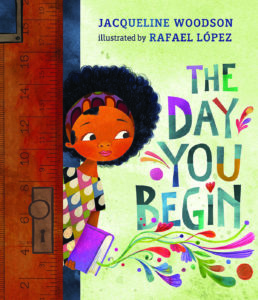
This powerful, lyrical picture book speaks directly to the children who are its intended readers, describing those familiar moments when a child may be marked as an outsider among their peers because of their home language, or the color of their skin, or the “different” food they bring for lunch. The soft, evocative illustrations introduce us to characters who live these situations alone, before realizing that they can connect across, and because of, the identities and experiences that make them unique. This book could be used to foster meaningful personal connections and anchor discussion about community in younger elementary grades.
***
Before She Was Harriet
By Lesa Cline-Ransome
Illustrated by James E. Ransome
(Holiday House Publishing, 2017)
42 pp.

Biographies of great people typically start with the individual’s childhood and then show her progress from humble youngster to powerful adult. Not so in this creative flashback narrative about the life of Harriet Tubman, which begins by describing a weathered “old woman tired and worn” sitting alone at a train station. This is Harriet, and the story flows backward from that moment. Striking watercolors illustrate how “before she was Harriet” she was called a suffragist, a general, a spy, and a nurse. As the book progresses, you see her before the war as Aunt Harriet, an enslaved girl. Turn the page and she becomes the very young Araminta, learning from her father to read letters and read the stars. The American progress narrative is absent at the end, when the story returns to the train station and Harriet climbs into a segregated train car, helped by a Black porter while whites board a separate car. The story ends with Harriet, an elder woman on the train, remembering her many identities. The artist painted the final portrait of her as humble and satisfied, making direct eye contact with the reader as if telling us to be so brave.
***
Curriculum
Art as a Way of Talking for Emergent Bilingual Youth
Edited by Berta Rosa Berriz, Amanda Claudia Wager, and Vivian Maria Poey
(Routledge, 2018)
300 pp.
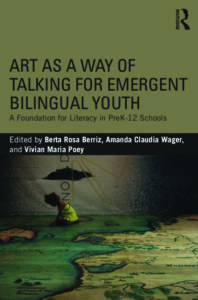
Too frequently, discussions about emergent bilingual students focus on remediation and perceived deficits. This anthology provides a powerful counter-narrative by examining how the arts, integrated into Pre-K-12 classrooms, can help emergent bilingual students lift their voices while honoring and including their home languages in instruction. The articles in this book provide windows into classrooms and programs in which photography, theater, collage, illustration, digital arts, and spoken word bring curriculum and student stories to life.
***
Rising: Dispatches from the New American Shore
by Elizabeth Rush
(Milkweed Editions, 2018)
320 pp.
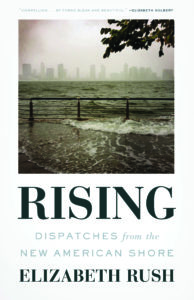
In this nonfiction collection of voices from our nation’s shorelines, Elizabeth Rush’s haunting prose submerge us in the realities of sea level rise. First-person accounts, vignettes, and Rush’s own observations provide students and teachers with a model for how to critically, poetically, and humbly interrogate the ways the climate crisis impacts ethnically, politically, and socioeconomically diverse U.S. communities. Her tone avoids shaming and instead asks us to imagine and grapple with the inevitability of the effects of climate change happening here and now. Rush adds to a growing collection of writing about the climate crisis that weaves stories of community struggle and resistance with relatable science and emotional intelligence.
***
From Teaching to Thinking: A Pedagogy for Reimagining Our Work
By Ann Pelo and Margie Carter
(Exchange Press, 2018)
402 pp.
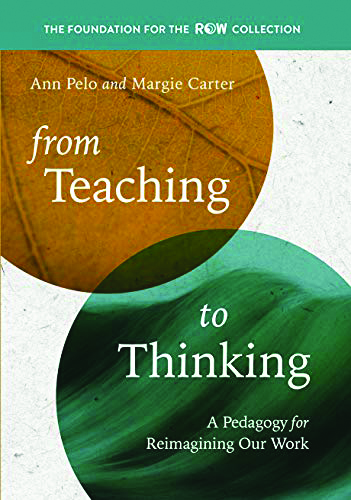
Many Rethinking Schools readers are familiar with Ann Pelo’s Rethinking Early Childhood Education, a great collection of articles that explores the connection between early childhood education and social justice. In From Teaching to Thinking, Pelo teams up with her longtime collaborator Margie Carter in a conversation that extends and broadens themes in Rethinking Early Childhood Education. This book is animated by the questions that every educator should ask about our practice: “What kind of people do we want to be? What kind of world do we want to live in?” Through rich story and self-reflection, Pelo and Carter explore how our work with children and with each other always embeds answers to these questions. Although the examples they draw from are with young children and early childhood teachers, the book’s insights transfer to all teachers. From Teaching to Thinking sings with wisdom.
***
Making All Black Lives Matter: Reimagining Freedom in the 21st Century
By Barbara Ransby
(University of California Press, 2018)
240 pp.

Ransby describes this history as a “love letter to the organizers in the Movement for Black Lives, and a tribute to their increasingly expansive vision.” She takes care to demonstrate that for every viral hashtag, nationally recognized activist, or large-scale protest, there are dozens of mostly anonymous community organizers and grassroots groups facilitating the political groundwork, holding space for action, offering guidance and support, building, educating, connecting, pushing, inspiring. By recognizing — and naming — the unsung heroes in this movement-in-the-making, Ransby demonstrates the centrality of bottom-up activism. When Ransby writes, “We look to the new generation of organizers, dreamers, visionaries, and freedom fighters to forge out of this current state of emergency, this current bleak moment, a new path, for Black people, for all people, and for the planet,” one feels that she is speaking not just to the amazing constellation of individuals profiled in her book, but to her readers, too.
***
Podcast
Scene on Radio: MEN
Hosted by John Biewen and Celeste Headlee
Center for Documentary Studies at Duke University
(Distributed by PRX, 2018)

After taking a deep dive into white supremacy in last season’s Seeing White, the newest podcast from Scene on Radio, MEN, investigates the origins, staying power, and many forms of patriarchy. Co-hosts Celeste Headlee and John Biewen weave their own life experiences with sexism, toxic masculinity, and misogyny into far-reaching conversations with scholars, journalists, and activists. Episode topics include how masculinity is performed — and sometimes challenged — on sports talk radio; the intersection of homophobia and masculinity in male socialization; “himpathy,” a term coined by Kate Manne to describe some people’s tendency to sympathize with powerful men when they do wrong. A must-listen — and very classroom friendly — episode is “Feminism in Black and White,” which introduces listeners to Kimberlé Crenshaw’s intersectional feminism through the dramatic story of Gertrude Perkins. Perkins’ brave choice to speak out about her sexual assault in 1949 by white police officers in Montgomery, Alabama, was a challenge not just to patriarchy but white supremacy too, inspiring the activists who would lead the bus boycott just a few years later.

